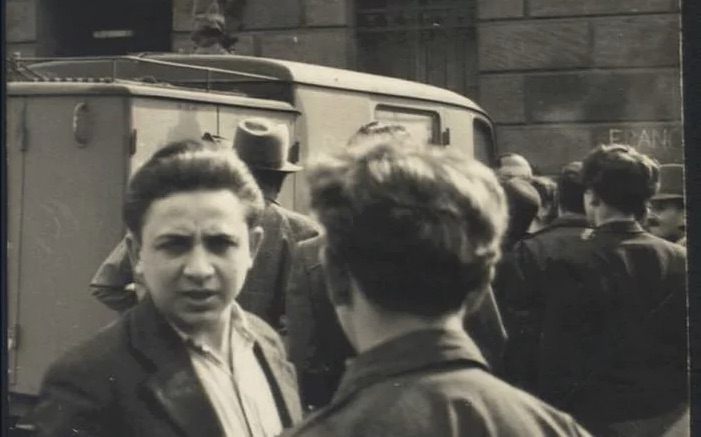Found: A Photo That Might Prove This Famous Jewish Assassin Survived the Holocaust
His actions were used to justify Kristallnacht.

When Herschel Grynszpan was 17, he killed a German diplomat, whose death was used as a pretense for Kristallnacht, the 1938 attacks on Jews in Germany that began the Holocaust. Grynszpan himself was taken to a concentration camp, where he was thought to have died in the early 1940s.
But a newly discovered photo from 1946 suggests that he may have survived the war.
Christa Prokisch, an archivist at the Jewish Museum of Vienna, found the photo in the museum’s collection. When she saw the face of the young man in the photo above, she told the Guardian, “I recognized him immediately.”
With Armin Fuhrer, a German historian and journalist who has written a biography of Grynszpan, she sought to prove her instinct right. As the Guardian reports, they had a face recognition test conducted on the photo, and it showed a 95 percent match with other photos of the young man.

Grynszpan was born in Germany, to parents who had immigrated there from Poland, but by the time he was 17, he was a stateless person living in Paris. As a Jewish person born in Germany, he wasn’t entitled to citizenship there; when he was a teenager, Poland passed a law stripping Polish people who’d lived abroad for more than five years of their citizenship.
In France, Grynszpan was living with his uncle in a Yiddish-speaking community while waiting to immigrate to Palestine, when his family was deported from Germany. They were sent to a refugee camp on the Polish border, in squalid conditions. Grynszpan went to the German embassy in Paris, perhaps intending to kill the ambassador, and shot a high-ranking diplomat instead.
Arrested by the French police, Grynszpan was eventually taken by the Gestapo to the Sachsenhausen concentration camp; the last evidence of his life dates to 1942. His parents, who emigrated to Israel after the war, had him declared dead in 1960. But there have always been rumors that he survived the world and was still alive in France, Germany, or Israel.
If Grynszpan did survive the war, it opens a new mystery: how did he do it?







Follow us on Twitter to get the latest on the world's hidden wonders.
Like us on Facebook to get the latest on the world's hidden wonders.
Follow us on Twitter Like us on Facebook